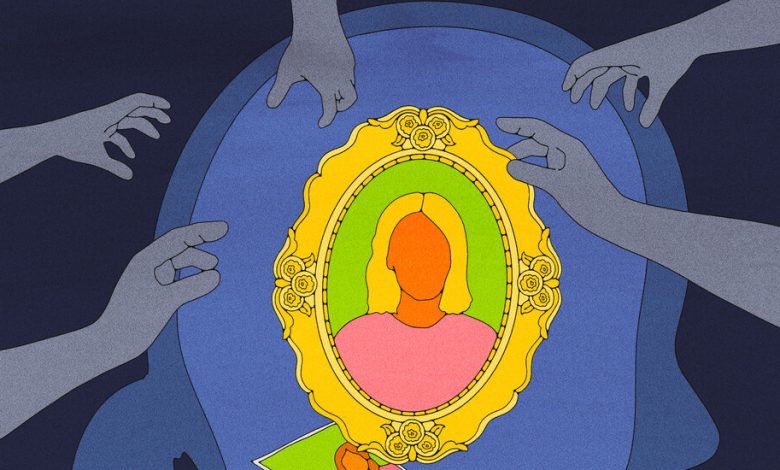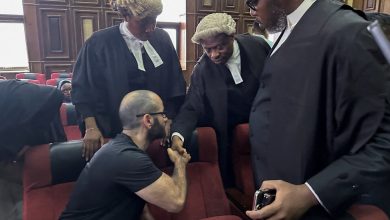The True Harm of True Crime

In the 1990s you would have been hard-pressed to find someone who didn’t know the name of my sister Polly Klaas. I was 6 years old when a stranger abducted 12-year-old Polly from our bedroom on the evening of Oct. 1, 1993. Her face quickly became a fixture on nightly news, her name featured prominently in headlines alongside fearmongering about crime rates. News crews broadcast from our living room and remained camped in front of our house during the two-month search before her body was found.
Though the media frenzy should have ended there, it only intensified, fueling a political climate primed for reactionary reprisal. Polly’s kidnapping from our middle-class, white, suburban community triggered a national outcry for punishment and retribution.
In the next few years, true crime began to morph into the media obsession it is today. Last year, the Hollywood Reporter alerted its readers to “30 True-Crime Series to Binge Right Now.” As I write this, nearly half of Apple’s top 20 podcasts in the United States are devoted to true crime, and the internet is saturated with recommendations for the best new true crime books to read.
One might argue that this genre honors victims and those who solved or sought to solve the cases. However, as a survivor whose tragedy continues to be exploited by creators of true crime stories, I know the personal pain of this appropriation, as well as how coverage of these high-profile cases can contribute to broader injustices. The exploitation of victims’ stories often carries a steep cost for their families as their tragedies are commodified and their privacy repeatedly violated for mass consumption.
In 2022, for instance, the release of “Dahmer — Monster: The Jeffrey Dahmer Story” on Netflix caused profound distress among many family members of Dahmer’s victims, who felt that the show was profiting from their pain, misrepresenting actual events and retraumatizing those who had lived through the horror of Dahmer’s crimes.
On top of those harms, the stories that don’t fit with true crime’s cultural emphasis on white female victimhood too often go untold.
Before my sister’s murder, a version of what has become known as the three-strikes law was proposed in California. The measure called for a sentence of 25 years to life for almost any crime, no matter how minor, if the defendant had two prior convictions for crimes the law designated as serious or violent. The measure was initially seen as so unjustifiably harsh that it was swiftly rejected by the State Assembly’s Public Safety Committee.
But Polly’s case changed things in California. In the wake of our highly publicized tragedy and the murder of 18-year-old Kimber Reynolds the previous year, politicians were able to leverage the grief of some victims’ family members to revive their proposal, swiftly passing one of the harshest sentencing laws of the past century.
Since the law was enacted, over half the people sentenced under it were imprisoned for nonviolent crimes, and the law is applied disproportionately to people of color and people with mental illnesses and physical disabilities. Though the law was modified — it now requires the third offense be a serious or violent felony — the law continues to glaringly amplify the institutional discrimination that targets communities of color and other marginalized groups.
It was difficult for me to feel a sense of justice in the years after Polly’s death. Although her killer was caught and convicted, I grew up watching the brief beauty of my sister’s life eclipsed by a political narrative that weaponized her innocence to propel an era of mass incarceration and true crime obsession.
Those early experiences showed me how sensationalist stories in the media about high-profile crimes not only erode the dignity of victims but also can inflate public perception of national crime rates, which have been in decline for decades. Misguided policies like three-strikes laws aren’t merely unfortunate side effects of inflammatory discourse; they are the direct result of moral outrage curated by hyperbolic headlines and the pervasiveness of true crime’s grisly method of storytelling.
True crime’s narratives often concern themselves more with exacting vengeance than understanding what survivors need in order to heal and recover from unthinkable harm. They can animate our appetite for revenge and conflate justice with punishment when victims need and deserve so much more support than vengeance or punishment can offer. And yet a majority of survivors do not receive any victim compensation or referrals from the justice system to support services that are essential to trauma recovery.
Additionally, true crime stories frequently center on white female victims who were harmed by strangers. This overshadows the reality that Black Americans are more likely to be victims of homicide and that in cases in which a perpetrator is identified, a vast majority of homicides are committed by people known to the victims. The exploitation and erasure that slant true crime’s bias toward sensational violence undermine our ability to address the systemic root causes of harm while estranging us from our empathy toward marginalized victims most affected by crime.
Although none of the content creators who went on to dramatize my sister’s murder have ever asked me for consent, a few have reached out in recent years to ask me for my memories. In so doing, they often excitedly bombarded me with details about the case I didn’t want to know, causing an onslaught of post-traumatic stress. I can recall the subsequent weeks that I spent lying awake at night, trying to quell the panic in my nervous system. How could I explain to these writers and producers that my memories of Polly are the only things I have left of her that haven’t been exploited or extracted for public consumption? How could I convey the traumatic upheaval these books and shows could set off in my life and the lives of my loved ones? Would our pain matter to these people who claimed to care so much about justice and the welfare of victims?
An unfortunate result is that packaging trauma as entertainment ignores the diverse needs of victims. Whereas some true crime audiences may view victims and their families as a monolith crusading for punitive sentencing, a 2022 report by Alliance for Safety and Justice, an organization I work with, reveals that most of the survivors it surveyed favored rehabilitation and prevention over punishment. To truly dismantle cycles of harm, it is imperative to amplify survivors’ stories on their own terms and earnestly embrace the safety solutions they are pioneering in their communities.
On our path to healing, my sister Jess Nichol and I started “A New Legacy” in memory of Polly, a podcast of conversations with community organizers and people harmed by three-strikes laws to explore how we can replace systems of punishment with systems of care. I also am a producer for the “Crime Survivors Speak” podcast, on which we amplify the insights and experiences of members of Crime Survivors for Safety and Justice, a survivor organization with nearly 190,000 members, to reduce incarceration and increase investments in crime prevention, trauma recovery and rehabilitation. Through this work, I’ve learned that when you truly listen to survivors, your heart rate should never be speeding up; it should be slowing down. This is how new dimensions of justice and healing become imaginable.
Annie Nichol is a writer and activist whose sister was murdered 30 years ago.
The Times is committed to publishing a diversity of letters to the editor. We’d like to hear what you think about this or any of our articles. Here are some tips. And here’s our email: [email protected].
Follow the New York Times Opinion section on Facebook, Instagram, TikTok, X and Threads.



